Manuscripts Etc.
| CLOSE WINDOW |

|
The following items are drawn from the William Faulkner Foundation Collection at the University of Virginia's Albert and Shirley Small Special Collections Library (http://small.library.virginia.edu/). |
|
Faulkner had the idea for what he called "a sort of Huck Finn" novel as early as 1940, but it wasn't until twenty years later that he began to write it. Two typescript versions of the book that became The Reivers are in the Faulkner papers: one titled "THE HORSE-STEALERS," which Faulkner began in the late spring, 1961, and finished by the end of August; and the revised, untitled version of that that Faulkner finished and sent to his publisher by the end of September, and that was used as the setting copy for the book. At this point in his career, Faulkner typically composed his fiction at his typewriter, but on the back (verso) of pages 4 and 5 (below left) of the earlier typescript is a handwritten version of the opening paragraphs which may be Faulkner's first effort at writing the novel. Faulkner also wrote the novel's first sentence on the back of what became page 1 of the same typescript (second from right). There's no way to tell how much more of the novel he may have written by hand, but the likelihood is that nearly all the novel was drafted on the typewriter. Below right: the first page of this first typescript, with the title that Faulkner added sometime after changing the old ribbon on his typewriter - which he did in the middle of page 8 of the typescript. 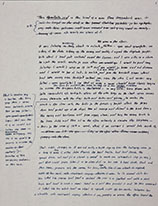 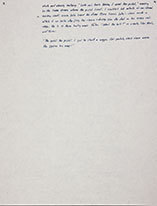 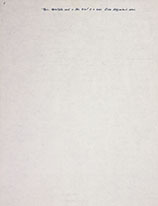  In October the novel was acquired by the Book of the Month Club for its members as a 1962 selection. In November Faulkner traveled to New York to work on preparing the text for publication. From his letters, we know that he was still struggling to find a title for it. By mid-September "The Horse-Stealers" had been replaced by "The Reavers," but Faulkner told his editor at Random House, Albert Erskine, that that word "sounds too peaceful, bucolic," and asked his opinion of "The Reivers," an archiac "Scottish spelling." Even more vexing, apparently, was the question of how to frame the narrative. From the beginning Faulkner conceived the story as twice-told: the adventure it describes belongs to Lucius Priest II, who is 11 years old in 1905; the narrative itself, however, is the work of Lucius Priest III, his grandson, who is a boy in 1960 when his grandfather recounts the adventure to him. In every version of the story we have, two words at the start - "Grandfather said," the only words the grandson ever contributes - set this frame in place. But Faulkner struggled to decide how to situate those words in the text. In the handwritten first draft above, they are the 2nd and 3rd words of the novel, and underlined. In the other handwritten version and the first typescript above, they remain in the same place, but set off by commas. On the four "first" pages below, from the setting typescript and the carbon copy of that, you can see how Faulkner experimented with other alternatives. If I have them in the right order, chronologically, he went from inserting the words in the first sentence in various ways - underlined, set off by dashes, unadorned - to CAPITALIZING THEM and moving them above the rest of the text, and then switched them back and forth again. The published novel, of course, settles on the most striking version: "GRANDFATHER SAID" set apart as the first words that a reader encounters, which - for some readers at least - emphasizes several of Faulkner's favorite ideas and tropes, including the presence of the past and the idea of a mediated narrative; it also links this last of his novels with similar locutions, all the "Father said"s in The Sound and the Fury or the "Uncle Gavin said"s in Intruder in the Dust and so on. 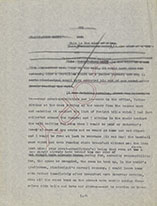 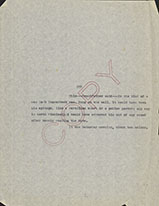 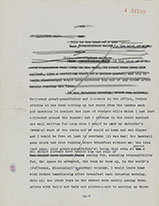 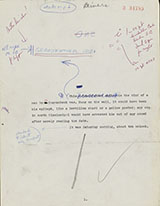 Just before Christmas, Faulkner heard from his agent that "The Saturday Evening Post would like to use of section of your novel THE REAVERS beginning on manuscript page 87 and ending on page 108, which is the motor trip to Memphis"; the American spelling of Reavers indicates that the title is still in flux. The agency added that to publish the except, the Post wanted Faulkner to write "two or three paragraphs of introduction, setting the characters and explaining the period and why they are on the trip." You can see the first two pages of the excerpt, as published in the 31 March 1962 issue, and titled "Hell Creek Crossing," in the "Illustrations" exhibit for the novel. You can see the typescript of the introduction, as written and revised by Faulkner soon after getting the request, below: 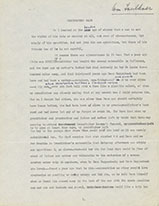 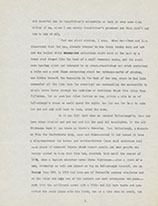 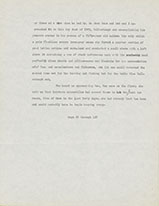 Esquire Magazine also bought and published an episode from the novel. It appeared in the May 1962 issue, under the title "The Education of Lucius Priest"; it is on pages 109-116 of the magazine, but as you can see below, Esquire left the pages themselves unnumbered. The illustrations (clearly intended to line up with Esquire's subtitle as "The Magazine for Men") are by Harvey Schmidt. 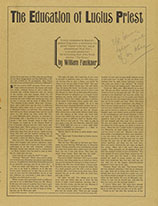 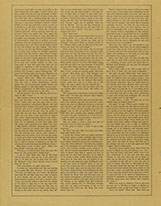 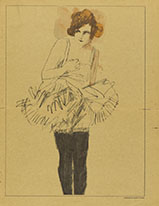 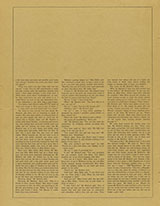 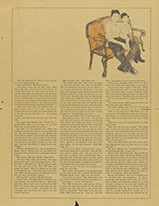 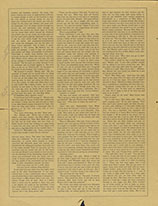 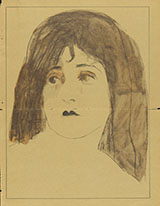 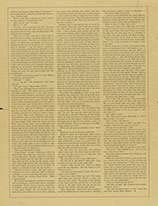 This copy of the Esquire excerpt is from the Albert Erskine Collection at Virginia. There are penciled corrections and revisions on 5 of the pages (109, 110, 112, 113, 114), and the handwriting looks like Faulkner's. The changes bring the magazine text into line with the text of the novel, as it was published 4 June 1962, a month after the magazine; if it was Faulkner who made these changes, it's not clear when - or for what purpose. The Book of the Month Club sent their own edition of the novel to their members as the July selection. Faulkner died in Oxford, Mississippi, on July 6. The remaining items here are not definitively connected to the writing of The Reivers, though I believe they belong here, as another part of the story of that story. Below: We can't be sure when or why Faulkner created the two genealogical tables on this sheet of paper, both tracing the descendants of Lucius Quintus Carothers McCaslin, the plantation patriarch who makes his first appearance in the Yoknapatawpha fictions in Go Down, Moses (1942). The Faulkner Foundation Collection catalog associates this item with that novel. But the Priest family which features so prominently in these genealogies does not appear in his fiction until The Reivers, where they emerge as another of the county's leading families, like their cousins the Edmondses, as a "cadet" branch of the McCaslins, the descendants of Old Carothers' daughter's daughter - it seems much more likely that this attempt to align the various generations is part of Faulkner's preparation for writing The Reivers. 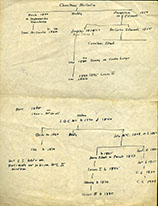 Below: These five sheets from a legal pad are something of a mystery. It's clear that Faulkner created them in an effort to establish dates for selected characters and events in the intertextual story of Yoknapatawpha. Down the five lefthand margins he wrote out every year between 1813 and 1955, and then filled in 29 of those dates with information about births, marriages, ages and deaths of 21 different characters, as well as about various event dates in 7 different stories and novels. The Faulkner Foundation collection guide associates this material too with Go Down, Moses, but it's clear that Faulkner created it about two decades later, also around the time he was writing The Reivers. At that same time - the summer of 1961 - he was working with Erskine to clean up the chronological inconsistencies in the three novels in the Snopes trilogy, which Random House was about the bring out in one volume. Fourteen of Faulkner's 29 total entries for these dates deal with material from the trilogy: for example, "[19]46 Mink released from Parchman. kills Flem." on page 5. Eight deal with characters and events on the 'distaff' side of the McCaslin family, the branch of the McCaslin tree where Faulkner locates the Priest family in The Reivers: on page 2, for example, "[18]69 Sarah Edmonds m. L.Q.C. Priest." 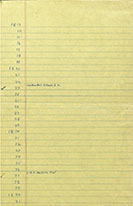  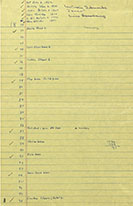 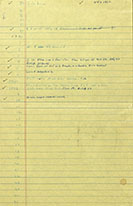 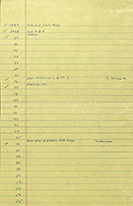 My own belief is that Erskine's persistent attempts to get Faulkner to address the trilogy's inconsistencies made him atypically concerned to have the story of the Priest family he was creating in The Reivers line up with the dates he'd already established for the larger McCaslin narrative. It's tempting to see these five pages as Faulkner looking back near the end of his life over the inhabitants of the world he'd created in Yoknapatawpha, drawing up this chronology as a kind of summa dramatis personae, but the focus of the entries is too narrow to support that idea. (For more on Erksine and Faulkner's work on this issue, see the "Manuscripts &c." exhibit for The Mansion.) Faulkner seems to have worked on this chronology at least twice. Page 4 above provides the clearest evidence of this. Note Faulkner's use of two different writing tools - probably an ink pen and a blue pencil - as well as the way he first (in what I'd call pencil) assigns Flem's arrival in "F[renchman's]. B[end]." to 1899, then crosses that out in what looks like ink to me and moves "Flem comes to Varner's store" to 1904. And this page also shows how the events of Reivers - "[190]5 Lucius. Boon & Ned go to Memphis in automobile" - claim his attention right alongside the Snopes story. On the whole the dates Faulkner assigns to births and deaths and so on are consistent with what most scholarship has established, and with our own dating choices in this project, though discrepancies remain. Another temptation is to treat the data here as definitive, but while it's clear that Faulkner is seriously trying to bring a lot into one focus, even here he reveals how casual he can be about the facts; despite what he says on page 5, for example, "Sound & Fury" should be 1928, not 1927. (See below for Faulkner's list of dates, characters and events across all five pages.) One final part of the mystery: the identity of the person whose left-sloping handwriting is evident at the top of page 3 and on the right side of page 5. The obvious suspect is Erskine, to whom Faulkner may have sent these sheets - but the handwriting doesn't look to me like his. Whoever made the addition, except for the one time on page 5 when he or she fills in Gavin Stevens' age in "[19]36," what this someone is doing, apparently, is transcribing parts of Faulkner's own entries into handwriting that is supposed to be easier to read. Everyone who has ever worked with Faulkner's autograph materials understands that impulse. TRANSCRIPT OF FAULKNER'S ENTRIES Page 1 Page 2 Page 3 [18]71 Maury Priest b. Page 4 [18]91 Eula born [190]2 Will V. <born&mt; 40 years old Page 5
Citing this source: |
